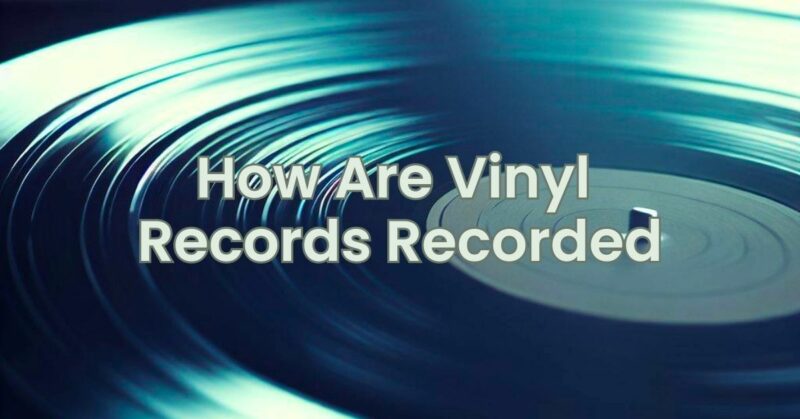Vinyl records are recorded using a process called phonocutting. This process is similar to the way that a record player plays back a vinyl record, but in reverse.
To record a vinyl record, the sound waves from the music are used to vibrate a stylus. The stylus is attached to a tonearm, which is a long arm that moves back and forth over the surface of a rotating disc. As the stylus vibrates, it cuts a spiral groove into the disc. The groove is an exact replica of the sound waves from the music.
The disc is then coated with a thin layer of lacquer. The lacquer hardens, creating a lacquer disc. The lacquer disc is then used to create a metal stamper. The stamper is used to press vinyl records.
The process of recording a vinyl record is a delicate one. The stylus must be very close to the surface of the disc, and it must be very precisely aligned. If the stylus is not aligned correctly, it can damage the disc or create unwanted noise.
Vinyl records are recorded at a much lower frequency than digital formats. This is because the grooves on a vinyl record are very small, and they can only hold a limited amount of information. The standard frequency for vinyl records is 45 RPM (revolutions per minute). This means that the disc rotates 45 times per minute.
Vinyl records offer a unique listening experience that cannot be replicated by digital formats. The sound quality of a vinyl record is warm and full. This is because the grooves on a vinyl record vibrate the air, creating sound waves that are similar to the original sound waves from the music.
The popularity of vinyl records has seen a resurgence in recent years. This is due in part to the fact that many people believe that vinyl records sound better than digital formats. Additionally, vinyl records are seen as a more authentic and enjoyable way to listen to music.
Here are some additional details about the phonocutting process:
- The stylus: The stylus is the most important part of the phonocutting process. It is made of a very hard material, such as diamond or sapphire. The stylus must be very sharp and very precisely aligned.
- The tonearm: The tonearm is the long arm that holds the stylus. It is important that the tonearm is very stable. Any movement of the tonearm can cause unwanted noise.
- The lacquer disc: The lacquer disc is a thin disc of acetate that is coated with a special lacquer. The lacquer is very soft, and it can easily be damaged.
- The metal stamper: The metal stamper is made by electroplating. Electroplating is a process that uses electricity to deposit a thin layer of metal onto a mold. In this case, the mold is the lacquer disc. The metal that is deposited is usually nickel or copper.
The phonocutting process is a delicate and precise one. It requires a high level of skill and experience. However, the result is a physical object that can be held and cherished, and that offers a unique listening experience that cannot be replicated by digital formats.


